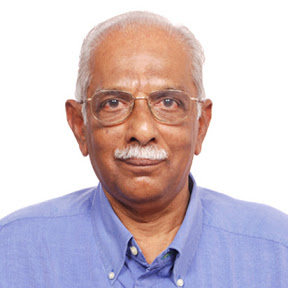Smart People or Smart Cities?
“Smart Cities” is the new, not so smart, slogan; whatever it might mean. The word, “Smart” could be used as an adjective, a verb or as a noun. It usually is, and is supposed to be, used in relation to humans or other animate beings. Even a monkey or dog could be smart. It is difficult to conceive of inanimate objects, like cities, as smart. The label could be the kind of “Innocent fraud” Galbraith describes in his monograph, “The Economics of Innocent Fraud”. Sometimes, one does assign human attributes to cities and the like, indirectly referring to the people in it. “Smart” as an adjective, may describe attire, (well dressed) or mental faculties (intelligence) and so forth. As a verb, the word best explains the physical or psychological state when suffering sudden pain. When a person feels sharp pain caused by say, a bee sting, he / she could be said to smart under its effect. Someone feeling upset, indignant, offended, wounded or annoyed may also be pictured as smarting due to the thing which, caused of these mental states. Perhaps, this is how most people would feel, when the “smart cities” plan is implemented; they would feel the sharp sting of unkept and broken government promises!
For over ten years, there was the “urban renewal mission”, with the acronym, JN-NURM. The state of “renewal” is there for all to see. In fact, the ‘Deccan Herald’ carried a report on JN-NURM, in its 17 September 2011 Bangalore edition, under the heading, “JnNURM, a mission unaccomplished”.
From urban renewal to smart cities the label change is just that, a change of name. A concept note on it, whose authorship is unclaimed, is available. It is on the website http://indiansmartcities.in. The note begins with the fact of urbanisation the world over and by implications assumes its inevitability. While the problems caused by urbanisation are recognized in the note the attempt appears to be to find palliatives. Sadly, even the thought of preventive measures eludes the proponents of the smart cities’ idea. No lessons are learned from either others or one’s own experience. The concept note referred above proudly proclaims, “In fact, 90% of the world’s urban population growth will take place in developing countries, with India taking a significant share of that. Urban areas also contribute a higher share of the GDP. The share of the GDP from urban areas in India has been growing”. The fixation on GDP, either in spite of knowledge regarding its drawbacks or ignorance of it, is indeed amazing. Is it not time to switch to HDI (Human Development Index) for measuring development? Urbanisation and seeking to fix ills of urban sprawl are not new. The US experience and its disastrous results should have be lesson enough, yet the smart cities’ advocates seem to fearlessly rushing into that quagmire where urban planning angels should fear to tread. There are two examples from USA, which hold important lessons for us. One is the State of California. Californian cities had the highest growth rate not just in the entire United States, but in the whole of the developed world. In the past few decades urban population there has grown by half a million persons each year. More than 80 % Californians live in metros with a populations exceeding 1 million. The State became bankrupt in 2010. It had to cut welfare programs for children and impose heavy taxes to recover. Even so the ability to pay teachers pensions and meet such expenditure is still a question mark.
The California model of urban expansion is sought to be replicated here through the smart cities initiative. Cities expand by pouring concrete and raising glass covered high-rises, devouring agricultural lands, destroying water and food sources, which are then sourced from distant places and are that much more costly. Here is a picture which, shows how cities are gobbling up farmlands
 |
|
From ‘National Geographic’ - A Northern Virginia housing development encroaches on farmland. Population growth and relocation is threatening rural environments across the world. Photograph by Sarah Leen |
The other example is that of Detroit. The city filed for bankruptcy on 18 Jul 2013. It is the largest city in USA ever to file for bankruptcy; twice as large as Stockton, California, which filed in 2012. India does not have “Chapter 9” bankruptcy protection as the US. If the smart cities idea is implemented it is quite likely that Indian cities would be sold to pay Municipal debts!
During the industrial revolution era, migrations to urban areas took place to fill the need for labour and the cities were able to provide employment to those who migrated. Living conditions improved over time both through legislation and the need to retain and motivate the workforce. Urbanisation in developing countries happening now is different. It is caused by poor peasants seeking livelihoods not available in rural areas due their lands being acquired for infrastructure – roads etc. or due to natural disasters like, droughts, floods and so on or due to war, riots and other upheavals. These migrations create slums and result in insanitary, polluted, chaotic cities with huge unemployment and crime. These cities cannot afford to feed, shelter or clothe the migrants. They become festering human infernos. Typical of the insanity in adoption of the “California model” of urban expansion, is China. Chinese urban population has grown three times since 1990. Seven hundred new cities have come up, apart from uncontrolled expansion of existing cities. This has resulted in unimaginable social and physical imbalance. Over four hundred Chinese cities suffer from water shortage. A 1200 KM canal built to divert water to areas of need has done little to alleviate the shortage. The project displaced 300,000 people from their homes. World Bank estimates that water shortage costs China over 2 % of its GDP due to damage to health. From a need of 1000 cubic meters per year per person, 11 of China’s 31 provinces have less supply than this. Each Beijing resident has only 145 cubic metres a year of available fresh water. Does India want to repeat the mistake of the Chinese urbanisation model?
Is there a solution to the urban chaos? Of course, there is. The way out is to prevent migration from villages into cities. This is achievable. Instead of smart cities, government should work towards helping people become smarter. Public spending on education and imparting livelihood skills should be the priority. Improve the quality of life in rural areas. Increase agricultural efficiency. Ensure remunerative prices for farmers. Create cold chains and cold storages. Overhaul agriculture product marketing systems and institutions. Incentivize businesses to relocate to hinterland and move out of cities. Create infrastructure to aid business in such regions. Totally fresh thinking is needed. Technology or IT is of no use when thinking is muddled, hidebound and is a repeat of mistakes of other nations. People are the greatest resource of any organisation or nation. Develop people first. Better people would help themselves to develop better quality of life. For this give up outmoded measures of economic progress, such as GDP, and instead use HDI to define economic goals and measure economic performance.
Mathew Thomas
Villa 18 A, Adarsh Vista, Basavanagar,
Bangalore 560037
Mobile: 98800-00401













